
From California to Iowa to New York, here are the stunning AIA 2018 Small Project Award winners
By Justine Testado|
Monday, Jun 4, 2018
Related
Architecture at any scale has the ability to create a positive impact, no matter how limited a project's size, scope, or budget is. In this spirit, the AIA created the Small Project Awards to recognize small-project practitioners for their high-quality small-project designs. Located from coast to coast in the U.S., 11 winning projects were announced in three categories for the 2018 edition, which had the open-ended theme of “Renewal”. Check out the projects below!
Category 1: small project construction, object, work of environmental art, or architectural design element up to $150,000 in construction cost.
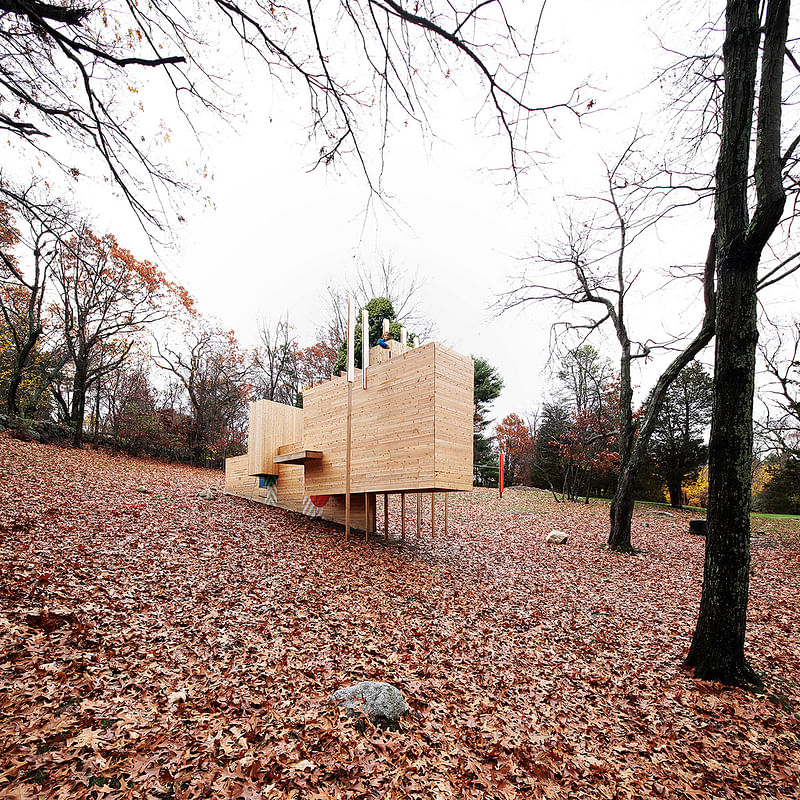
Five Fields Play Structure in Lexington, MA | FR|SCH Projects in collaboration with Matter Design
Project description: As a landscape for exploration, shunning function and standard, in favor of liberation, the structure cultivates imagination through play while supporting inventiveness through its unfolding, discoverable spaces.

RELATED NEWS Matter Design + FR|SCH Projects' “Five Fields Play Structure” reshapes the concept of play
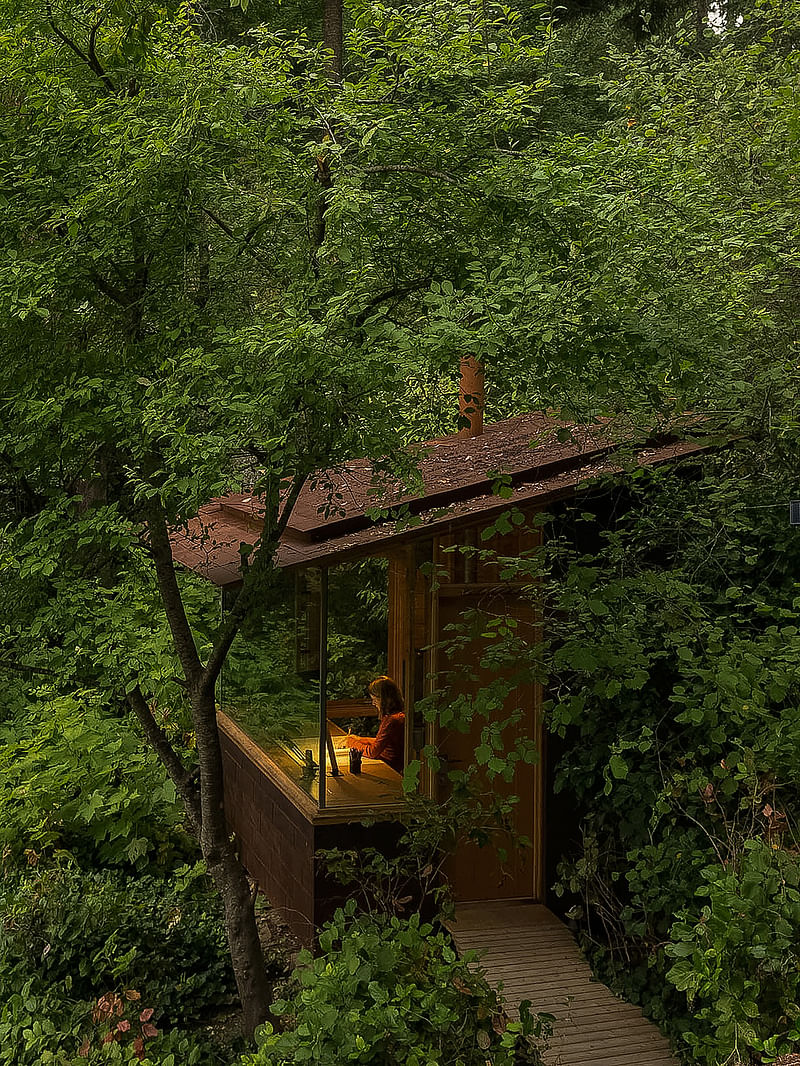
Studio / Bunkhouse in Bainbridge Island, Washington | Cutler Anderson Architects
Previously occupied by a dilapidated tool shed and carefully designed to fit its natural context, the project is now a multi-use building, that functions as a bunk house and design studio.
Category 2 winners: small project construction, up to $1,500,000 in construction cost
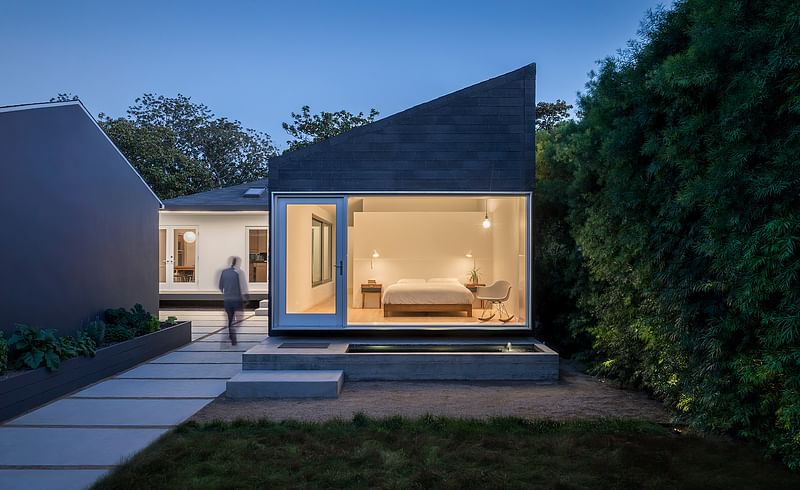
Rear Window House in Culver City, California | Edward Ogosta Architecture
This project demonstrates how a thoughtful, strategic intervention can breathe new life into an older home and be good for the neighborhood, without sacrificing the needs of the contemporary family.

Sawmill in Tehachapi, California | Olson Kundig
A family retreat embedded into the tough, scrubby landscape, Sawmill is self sufficient, durable, and economic.

RELATED NEWS Preserving family tradition with the Sawmill Canyon Retreat by Olson Kundig
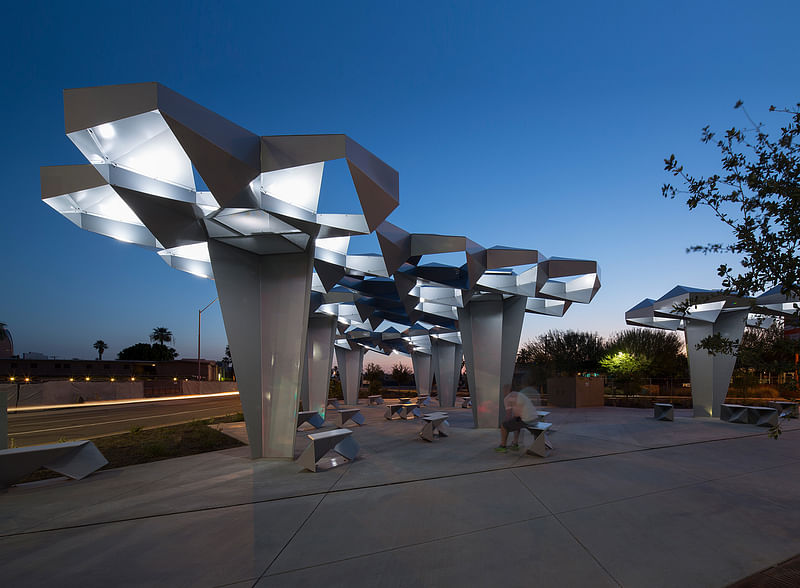
Shadow Play in Phoenix | Howeler + Yoon Architecture, LLP
By transforming a traffic median into a public space, Shadow Play fosters pedestrian life and improves the downtown Phoenix streetscape at Roosevelt Row. Clusters of shade structures create respite from the desert sun by offering a public parasol at an urban scale. Shadow Play's hovering canopy is formed from an aggregation of identical geometric modules.Photovoltaic panels are mounted to the top surface of the canopy, taking advantage of the optimally oriented geometry of the steel cells.

Sonoma Residence in Santa Rosa, California | Alchemy Architects, LLC
Sonoma weeHouse: a small, ultra-minimal, prefabricated home based onAlchemy’s original weeHouse® was customized in collaboration with the client, Apple’s Director of Store Design — and an architect himself. It is composed of two open-sided boxes set on concrete plinths nestled on the edge of gnarled oaks. The primary structure (640 sq.ft) features a whitewashed oak bed-box separating the living and bath areas. For shipping, this structure was designed as two modules: the main box, and a bolt-on porch, which cantilevers 10’ into the dramatic landscape. The accompanying guesthouse (330 sq.ft) is an abridged version of the primary structure and was also shipped essentially complete. A large whitewashed oak wardrobe forms the bathroom wall, while providing storage and privacy.
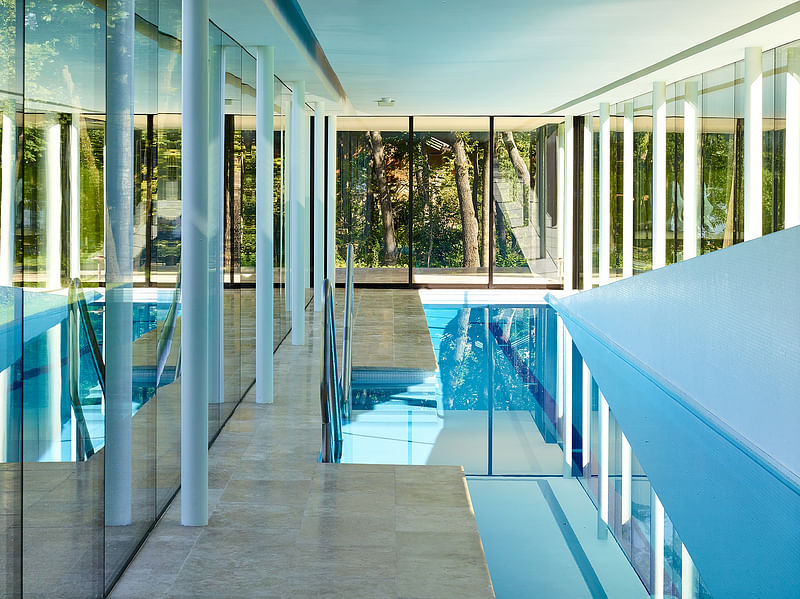
The Grand Lake Poolhouse in Grand Lake o' the Cherokees, Oklahoma | Allford Hall Monaghan Morris
The Grand Lake Poolhouse comprises a pair of lakeside pavilions containing a pool and spa in north-eastern Oklahoma, overlooking Grand Lake O’ the Cherokees. An existing clearing in the tree-lined hill is cut into with a single-story volume running parallel to the lake. A smaller volume is placed perpendicular to it, set slightly apart from its companion volume to capture a patio at the meeting point of the two axes. An L-shaped roof plane connects all internal and external space, creating a consistent datum that references the lake’s horizontality. To preserve views across the site and enhance swimmers' views from within, the longer glazed pavilion is embedded in the undulating landscape, while the smaller pavilion – containing massage and wash rooms – offers a counterpart to its more visually open neighbor with its intimate proportions and protective charred timber cladding. Together, the two volumes read as a distinct but unified pair; a discreet addition to the broader landscape.
Category 3: small project construction, an architectural object, work of environmental art or an architectural design that is under 5,000 square feet.

BI(h)OME in Los Angeles | Kevin Daly Architects
Installed in the courtyard of UCLA’s Broad Art Center, BI(h)OME is an experimental prototype lightweight accessory dwelling unit. Researched and designed by UCLA’s City LAB, graduate students and Kevin Daly Architects, the prototype structure demonstrates — in its design, fabrication, occupation, and recycling — what sustainability means at a personal level. This low-cost, low-impact unit could serve as housing for an elderly parent, a returning college graduate, or a rental unit. Each 500-square foot BI(h)OME contains a bedroom, living room, kitchen/dining room, and bathroom. Its structure is covered with an innovative translucent skin consisting of two layers of ETFE that is vacuum-sealed around a paper honeycomb creating a remarkably solid, yet light structure. The structure can be configured in different ways to fit any backyard and to catch the sun on photovoltaic cells that can be printed on the outside layer of the skin, while LED lights can be built into the inner layer.
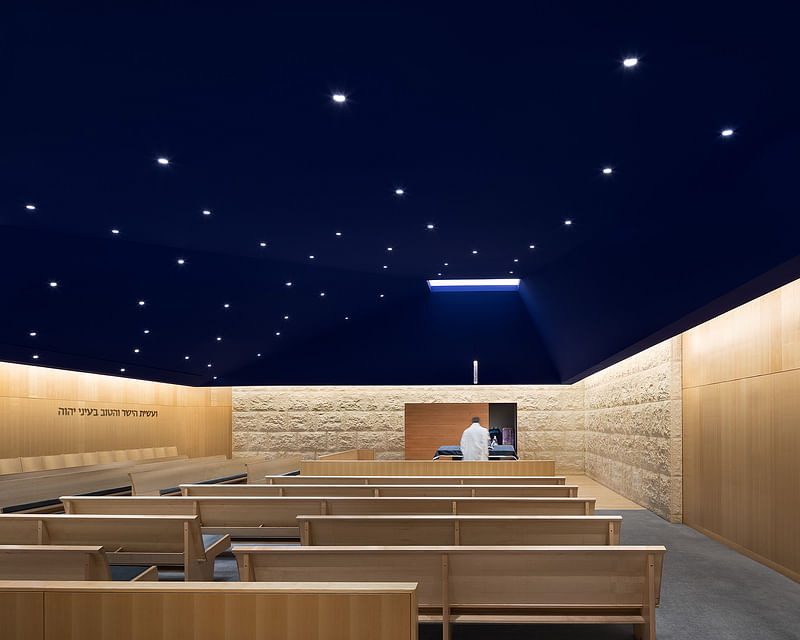
Chapel at Congregation Kehilath Jeshurun in New York City | FXCollaborative
A Lower School's gymnasium was transformed into a Chapel, creating a modern composition of space and objects that re-imagines the traditional synagogue at an intimate scale for quiet meditation, connection, and prayer. The Chapel is inspired by ancient texts that describe the Holy Ark as a simple, acacia wood box in the Wilderness of Sinai. The deep blue ceiling's pyramidal form creates an asymmetrical soffit that can be read as both "roof" and "celestial sky," and features a luminous opening from which a Ner Tamid light is suspended. Vertical maple strip panels on the walls reinforce the metaphor of the forested wilderness, while the Jerusalem Stone wall fragment behind the Ark is a symbol of the Wailing Wall and a reminder of the project's below-grade location. Beautiful materials and exquisite craftsmanship combine in a modern composition of space and objects that re-imagines the traditional synagogue at an intimate scale.
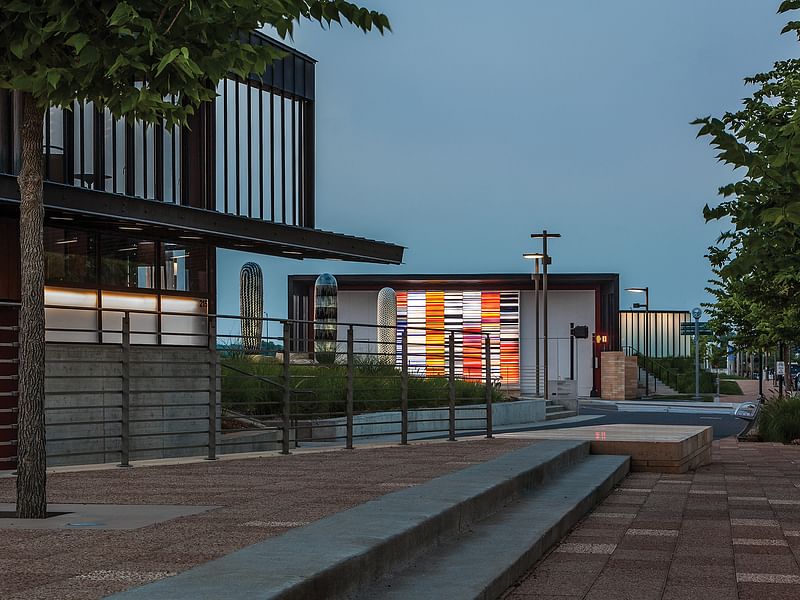
Principal Riverwalk Pump Station in Des Moines, Iowa | substance architecture
A pump station is usually a perfunctory piece of urban infrastructure used during flood events. In this instance, however, the architect was asked to create a pump station that was sympathetic with the Principal Riverwalk — a $50 million development along the Des Moines River.The resulting design created two objects – a Pump House and a Gate Valve Platform — that work with a neighboring Café Pavilion to frame an understandable place.The Pump House is a formal foil to this Café, sharing a formal language and material palette of black zinc and steel.The Gate Valve Platform became a glowing, translucent object atop a cast in place concrete base. Together, the Pump House and Gate Valve Platform flank a recreation trail marking the entry to street level. The architect worked with artist Jun Kaneko to integrate a glass mural, Expansion, mounted to the north face of the Pump House.
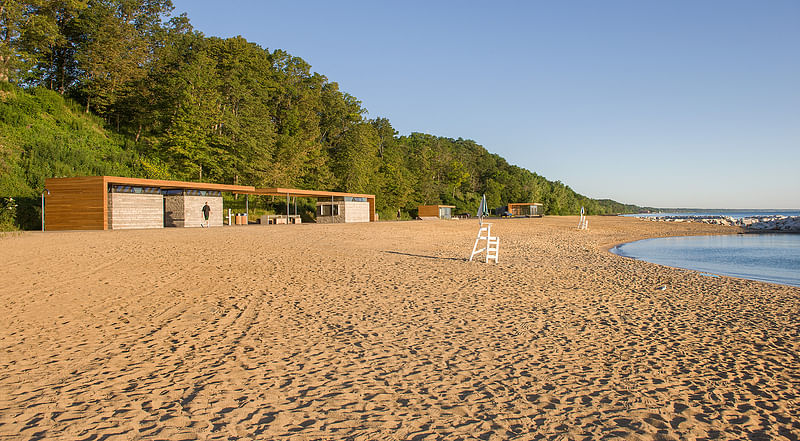
Rosewood Park Beach Improvements in Highland, Illinois | Woodhouse Tinucci Architects
Our solution to reactivating Rosewood Beach rooted basic amenities and an education pavilion in an elemental lakeside experience---a leisurely boardwalk stroll that meanders 1500-ft, connecting access points at each end and giving visitors an ever-changing journey along Lake Michigan. To minimize bulk, only functions needing privacy or separation are enclosed. All else is outdoors on the boardwalk itself, which wraps up and over to form simple, low-profile pavilions and site furnishings. Pavilions are long, low, thin, and topped with boardwalk planking so that views down the beach and from the park above are preserved. At the north end, the boardwalk expands to become the education pavilion. Moving south, the boardwalk morphs into benches and bridges a stream to reach the lifeguards’ station. Beyond, it folds up to form the snack bar and restroom pavilions. Materials are natural, simple, “beachy”: ipe, cedar, polished concrete, rough field stone.

RELATED NEWS Eleven designers distinguished in AIA 2017 Small Project Awards

RELATED NEWS Nine architects win big in the AIA 2016 Small Project Awards


Share
0 Comments
Comment as :